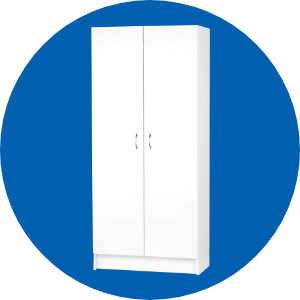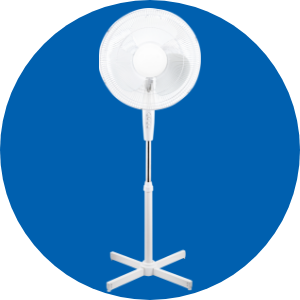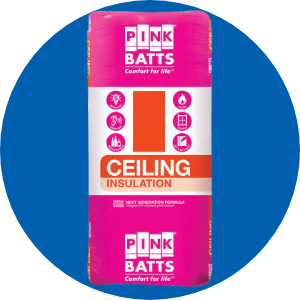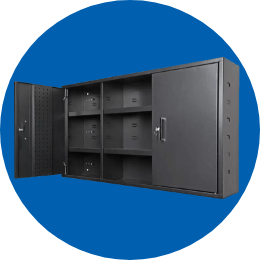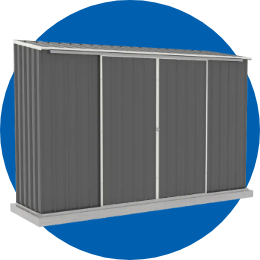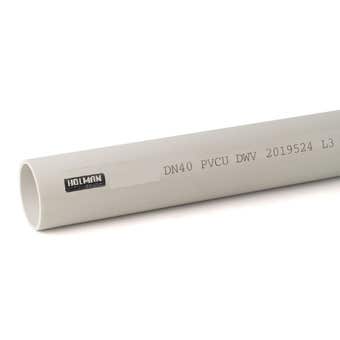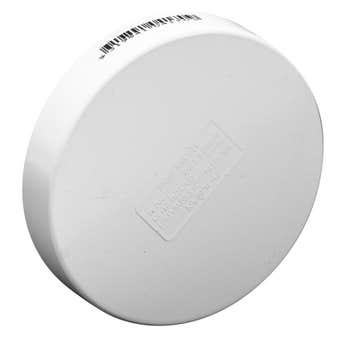- 28 October 2023
Why Build a Bee Hotel?
Australia is home to over 1,600 species of native bees. While many of these are solitary and naturally nest on their own, man-made bee hotels offer them a welcome abode. By mimicking the characteristics of natural reeds or plant stems, bee hotels provide a sanctuary for these industrious insects.
Shopping List
DIY Project Steps
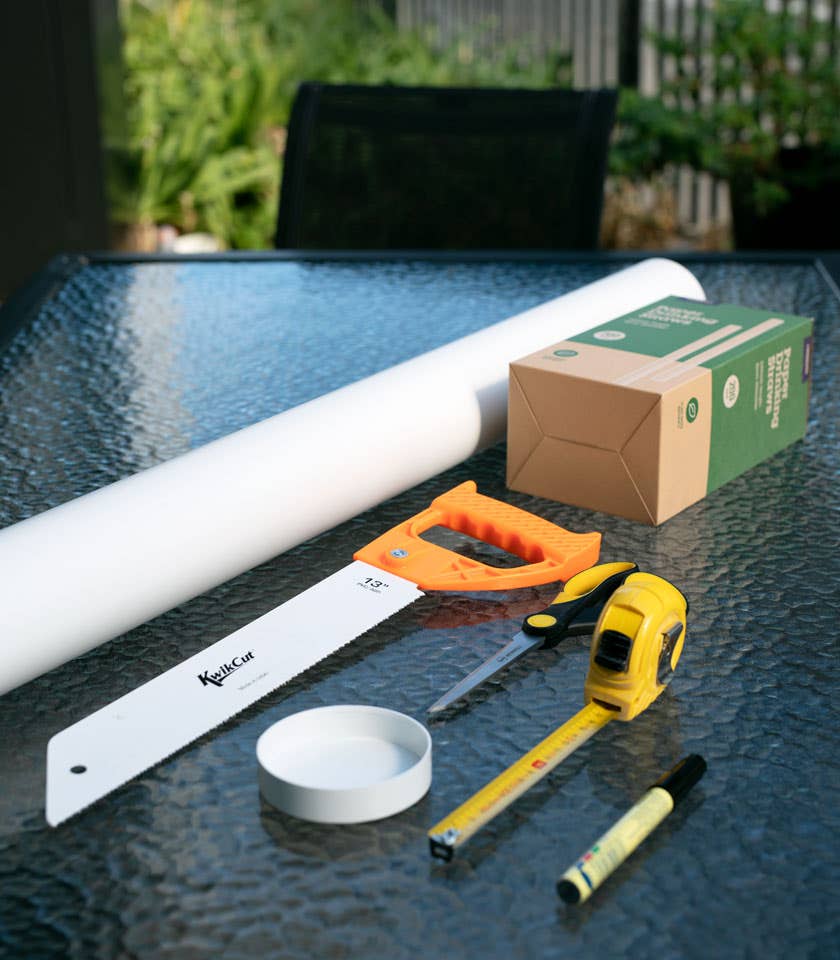

1. Plan location and gather materials
Lodge your DIY bee hotel horizontally on a branch or other similar location where it is protected and easy to see the holes. Ideally, secure your native bee hotel facing northeast, allowing for morning sun and afternoon shade. Hang the hotel between 1–2 metres off the ground and make sure the hotel cannot swing as bees will find it challenging to fly in and out.
An easy DIY to help native bee populations. Wherever possible, upcycle items you have lying around to reduce waste. We have chosen durable PVC piping to hold up in harsher weather conditions.
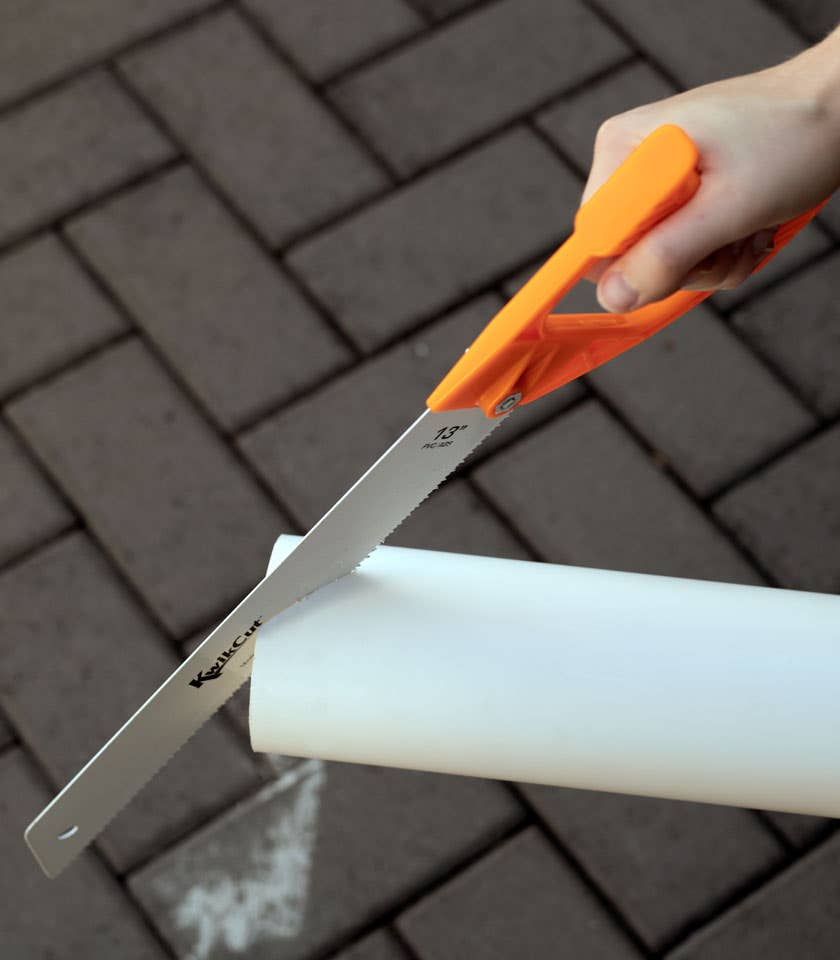

2. Weatherproof the PVC pipe
Create an overhang by cutting one end of a PVC pipe at an angle. The bees will need a minimum of 200 mm to nest with an overhang of about 50 mm. This will protect bees from harsh weather conditions. Cover the flat end of the pipe with a PVC cap or duct tape to ensure the hotel is waterproof.
You can choose to paint and decorate your native bee hotel to make it even more inviting. If you are painting, keep in mind to use pet-friendly paint or low VOC paint.
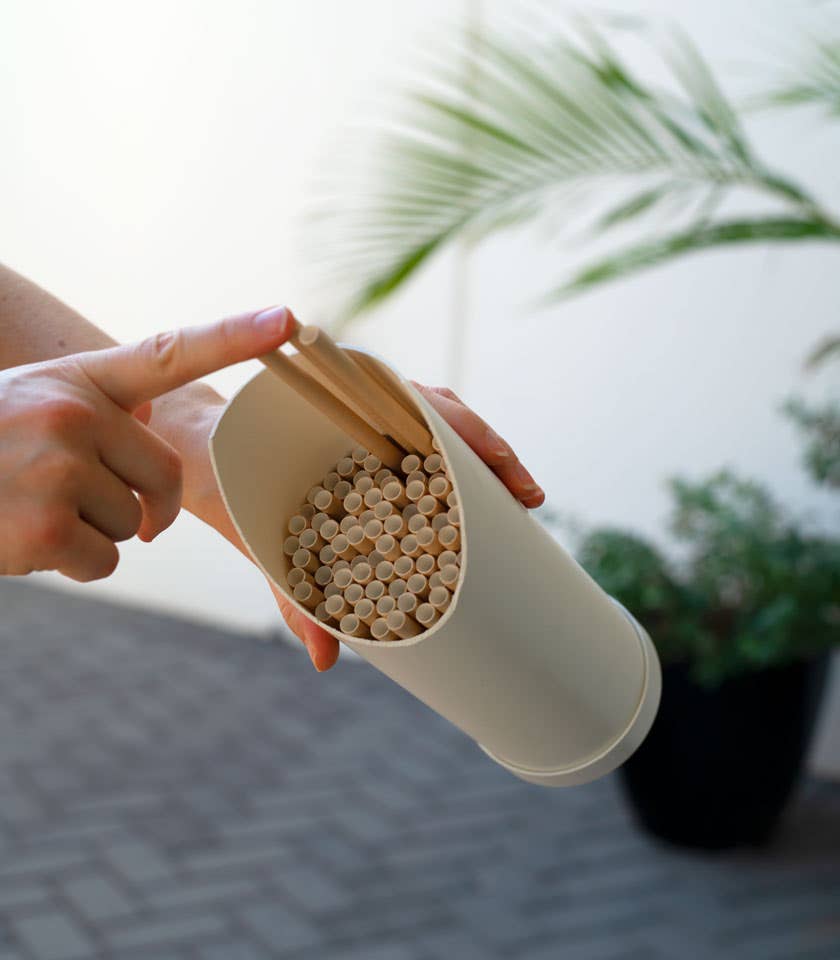

3. Fill with paper straws
Fill the open end of the PVC pipe with paper straws. If needed, cut down the straws to size to fit inside the DIY bee hotel (approx. 200 mm). To reduce movement between the straws, fill them as tight as possible without crumpling them (be sure to use uncoated paper straws, plastic or wax-coated paper straws can get too hot, and the bee larva might die). We used approx. 80 straws, but this might change depending on the diameter of straws you use.
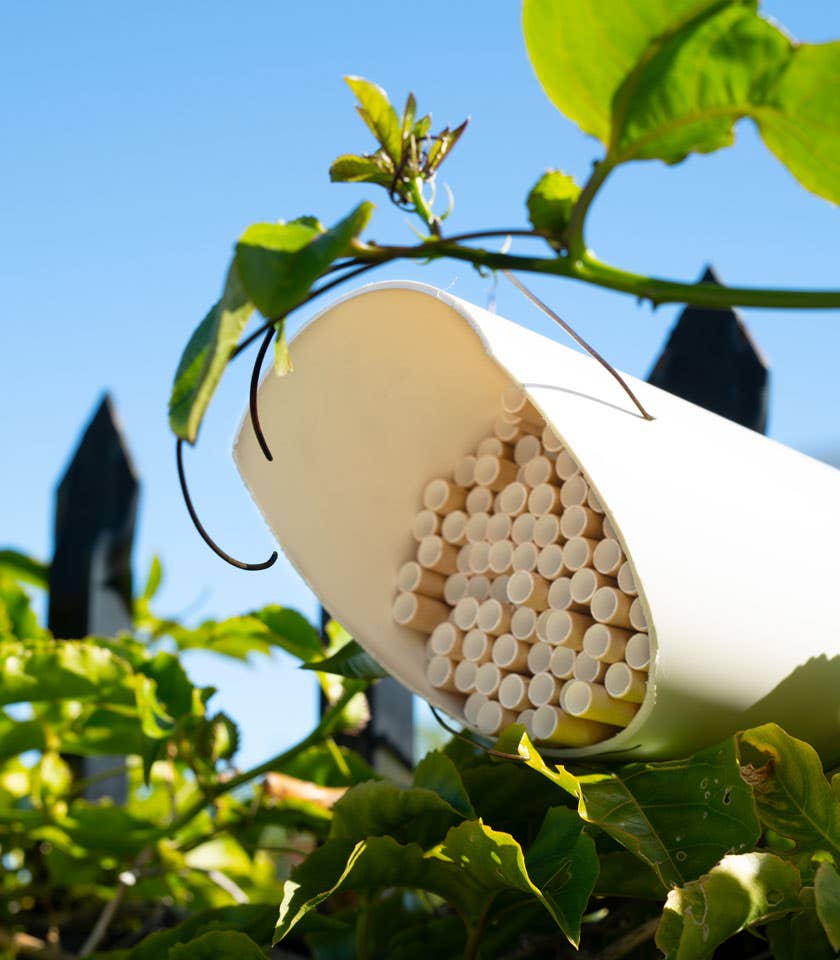

4. DIY bee hotel installation and maintenance
Lodge your new native bee hotel to your chosen location! Remember to hang the hotel around eye level. Tada! You’ve just built a spot for bees to visit your garden.
Bee Hotel Tips:
- Don’t try to attract bees to the hotel—if it is there, and they need it—they will come
- You can set up multiple small hotels scattered around your garden about 20 metres apart. This will reduce crowding and the spread of parasites and disease
- Other creatures might also like to stay in your hotel, like spiders. Try to remove unwanted guests as safely as possible
- Be patient and don’t clean out your hotel right away! Bees use the hotel to lay their eggs in brood cells, resulting in multiple eggs in each straw and more than one larva emerging as a bee. Leave the paper straws until they are definitely empty
- Look for a small cap at the end of a paper straw. This is the sign a bee has laid its eggs and sealed off its brood cells
- Once all bees emerge, you can clean out your hotel for the next season of occupants
The Significance of Bee Hotels
At first glance, bee hotels might seem like just another charming DIY project, but their impact goes far deeper. Here's why they're a vital asset for home gardeners and the Australian environment:
-
Support for Native Bees: Australia is home to over 1,600 species of native bees, many of which are solitary and do not live in hives like the more familiar honeybees. With urbanisation and habitat destruction, these native species often struggle to find suitable nesting sites. Bee hotels offer them a safe haven.
-
Improved Pollination: Bees play a pivotal role in pollinating our plants. For home gardeners, this means a boost in the yield of fruit and vegetable crops. A garden bustling with bees often sees healthier plants and more abundant harvests.
-
Biodiversity Boost: Encouraging a diverse range of bee species in your garden not only aids in pollination but also supports a more robust and resilient ecosystem. Each bee species has a unique role, and a balanced mix ensures the garden's health and productivity.
-
Educational Opportunity: Bee hotels can serve as an educational tool for families, especially children. They offer a unique window into the fascinating world of bees, promoting an understanding and appreciation for these vital pollinators.
-
Combatting Bee Population Decline: Alarmingly, bee populations are decreasing worldwide due to factors like pesticides, disease, and habitat loss. By setting up a bee hotel, home gardeners take an active role in conservation, offering these pollinators a fighting chance.
-
Enhanced Garden Aesthetics: Beyond the functional benefits, bee hotels are a delightful addition to gardens, adding character and serving as conversation starters. Their presence often attracts other beneficial insects and wildlife, turning gardens into thriving micro-ecosystems. Moreover, aligning your gardening activities with the seasons can make a significant difference. Explore this planting calendar for vegetables, flowers, and herbs to make the most out of your garden throughout the year.
In essence, while bee hotels might be small structures, they have a ripple effect, strengthening the intricate web of life in our backyards. For home gardeners, they're not just a project; they're a commitment to a healthier garden and a more balanced local environment.
Find this article helpful? Let Mitre 10 be your companion for the next project. Dive into our range of expert advice and resources today.




